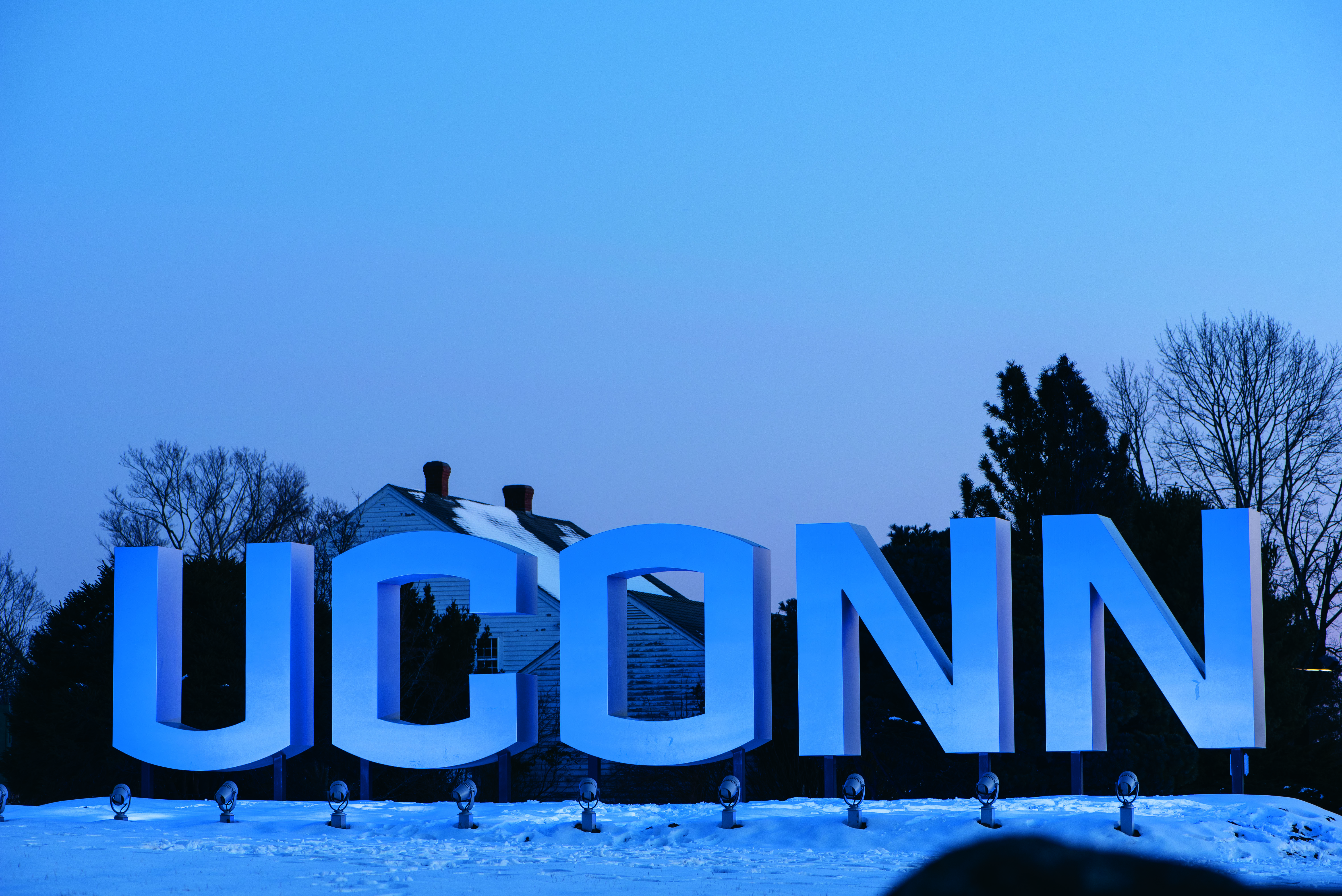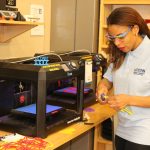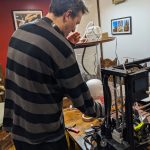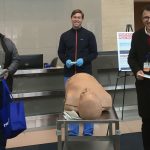A University collaboration that spans campuses and roles is identifying resources to optimize UConn’s response to the COVID-19 pandemic.
The COVID Critical Clinical Needs Project includes UConn researchers in Storrs, physicians at UConn Health in Farmington, and leaders from both campuses, including President Thomas Katsouleas and Dr. Andrew Agwunobi, UConn Health CEO and executive vice president for health affairs. Their charge includes determining what’s needed and how to meet those needs, and streamlining the process to develop solutions.
An early example of success came a few weeks ago. Faculty from both Storrs and UConn Health started talking about ways to address the projected shortage of personal protective equipment (PPE) faced by health care workers. The discussion revealed individual efforts taking place at both campuses, which turned into a collective effort and led to the development of plastic mask frames. The frames, fabricated using 3D printers, enable the safe use of tens of thousands of N95 respirator masks that otherwise wouldn’t have fit properly.
“We went from flashing red lights with our N95 supply to now having a little bit of a buffer,” says Dr. Michael Baldwin, UConn Health radiologist. “I saw a picture of OR nurses putting together their frames to put over their masks the other day. That’s incredible – something two weeks ago we didn’t even know we were going to get involved with is now clinically useful to protect the lives of our staff members.”
Meantime, using dummy heads from the medical school simulation lab, UConn physicist Jason Hancock has been testing aerosolized particles that could lead to additional mask alternatives.
Harnessing energy and innovation, and matching them with need, is a coordinating group – including Wesley Byerly and Julie Schwager from the Office of the Vice President for Research, and Baldwin and Chris Hyers from UConn Health – strategizing how to meet current and expected future needs in critical supply areas.
“We play matchmaker,” Byerly says. “We try to connect what the needs are with the expertise, knowledge, and insight we have both at UConn Health and in Storrs.”
For instance, two other needs that have arisen are swabs for sampling as part of the COVID-19 testing process and tympanic covers for the thermometers used to check temperatures of everyone entering campus buildings at UConn Health. And these, it turns out, are additional areas where 3D printing can help.
“It’s fascinating,” Byerly says. “Who would have known prior to this that would be the case? It turns out UConn, both UConn Health and Storrs, has a significant number and types of 3D printers, and lots of people with expertise in doing this, and that’s been very helpful.”
Baldwin, who serves as the clinical and production coordinator on the project, acts as a conduit between the MDs at UConn Health and the PhDs in Storrs.
“A challenge arises, [and] we figure out who in our faculty and staff can rise to meet that challenge,” he says. “Currently it’s a potential need for ventilators. We have fantastic faculty and staff in Storrs who are problem solvers, they’re mechanically inclined, and have an open-source ventilator design from Spain. We coordinated their initial fabrication of this ventilator with our pulmonologists and are now moving into the production phase of a stop-gap ventilator in the Innovation Partnership Building in Storrs for potential clinical use here at UConn Health.”
In that same building, home to the Proof of Concept Center and Quiet Corner Innovation Cluster, director Joseph Luciani has been laser-cutting face shields.
“It’s been a constant evolution, and it’s been really inspiring,” Baldwin says. “Hopefully one thing that will come of this situation is UConn Health will have more sustained collaboration with the smart folks at the UConn Storrs campus in the future. Our fantastic minds in Storrs are a resource that maybe we don’t utilize enough here in Farmington.”






